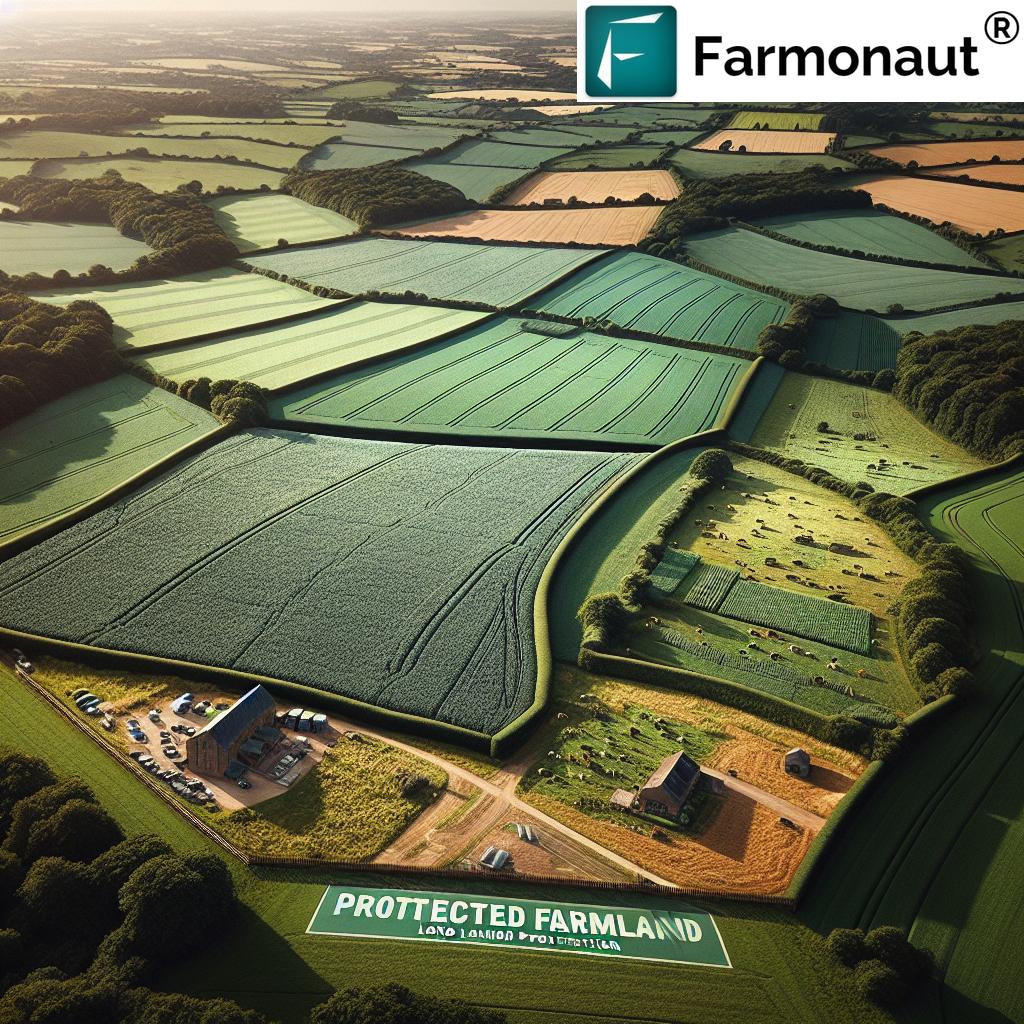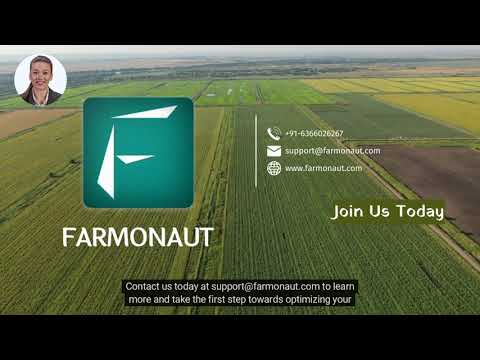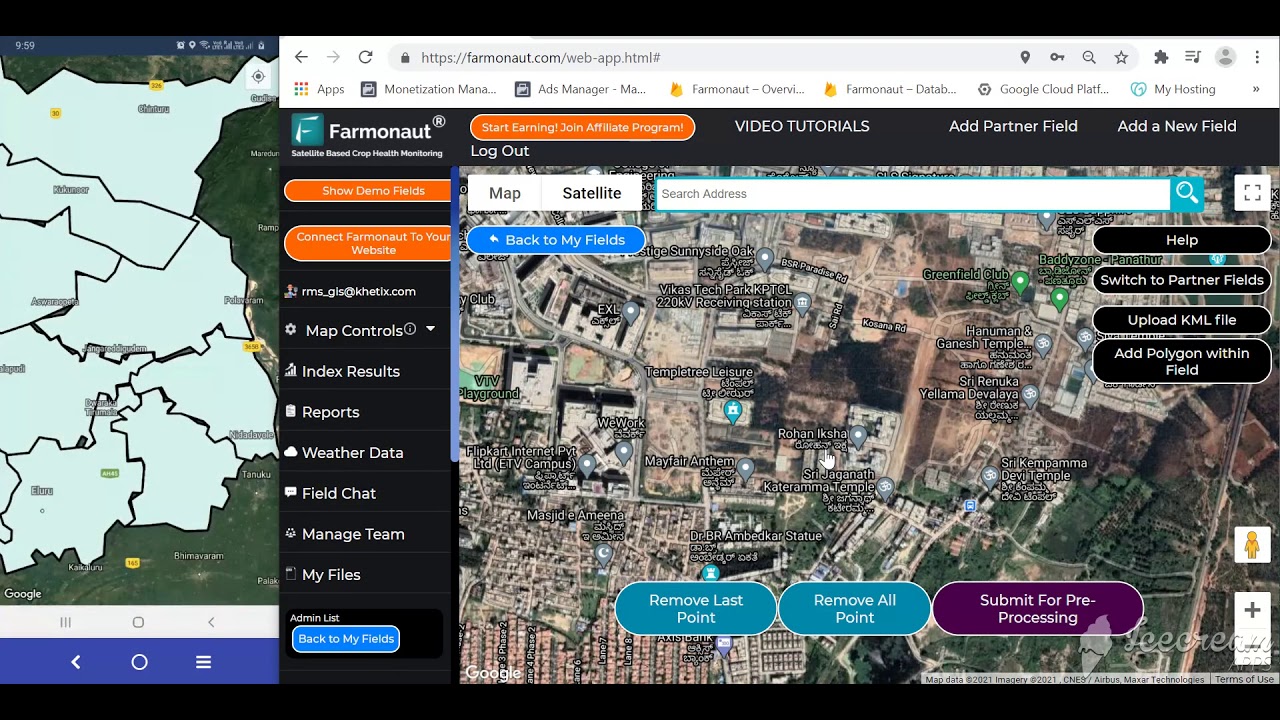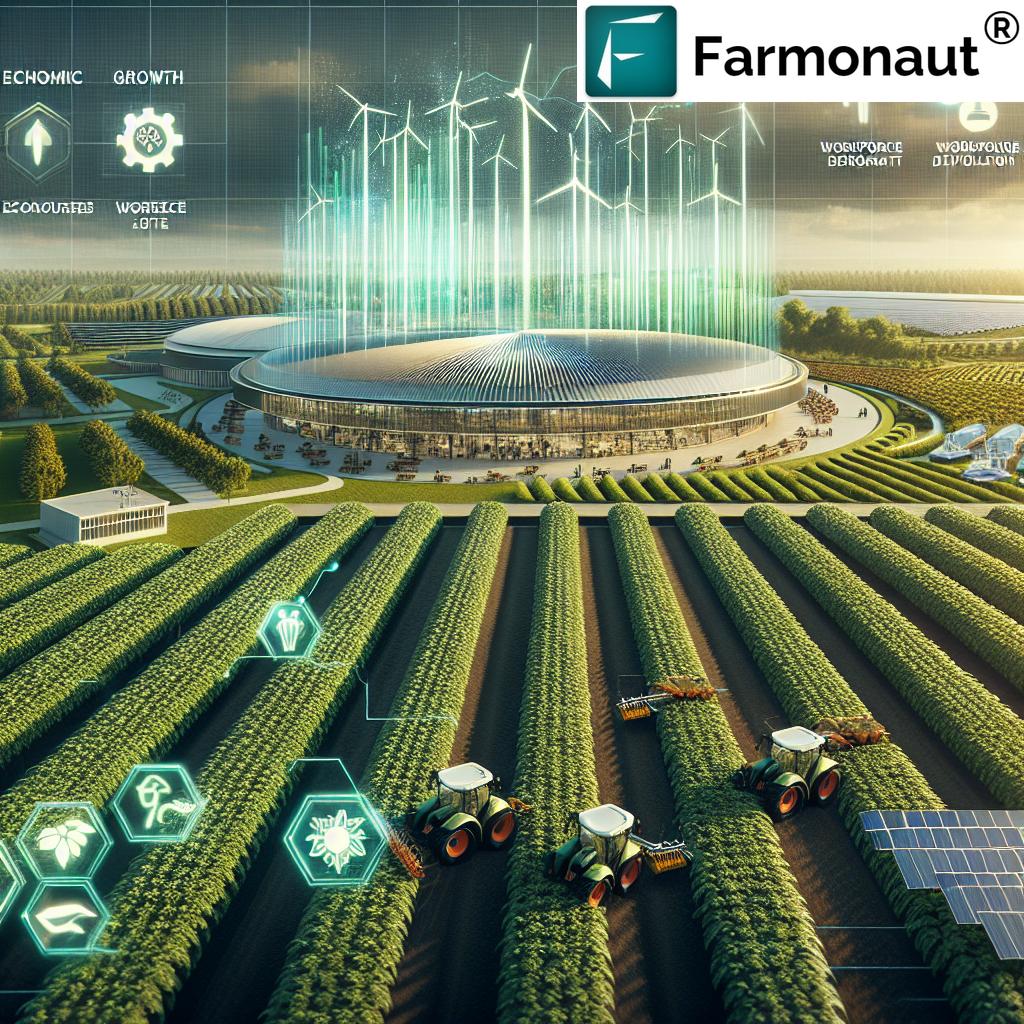Kent County Farmland Protection Program: Top 5 Ways
“Kent County has preserved over 25,000 acres of farmland since launching its protection program in 2002.”
Introduction: Preserving the Heart of Maryland’s Agriculture
Kent County, located on Maryland’s Eastern Shore, stands as a testament to America’s rich agricultural heritage. With rolling landscapes dotted by well-tended fields, family farms, and vibrant wildlife habitats, it’s no surprise that this region has been committed to preserving its rural character for present and future generations. At the core of these preservation efforts is the Kent County Farmland Preservation Program, designed to protect farmland from development and support the county’s enduring farming tradition.
Our blog will examine the underlying mechanisms of this farmland preservation program and its multifaceted approach to agricultural land conservation. We’ll highlight the top 5 ways Kent County secures its farming future, focusing on sustainable practices, community well-being, environmental conservation efforts, and critical support for local farmers. Along the way, we’ll also explore how innovative technologies, particularly those from Farmonaut, can further empower landowners and stewards of Maryland’s rich landscapes.
Program Overview: Kent County Farmland Preservation Program
The Kent County Farmland Preservation Program is a cornerstone initiative aiming to protect farmland from development and ensure agricultural viability across the county. This voluntary program enables landowners to sell development rights to the county itself, placing their properties under a permanent agricultural easement. In doing so, landowners receive financial compensation, which can then be reinvested in their farming operations—a critical step in maintaining both the economic stability and sustainability of local agriculture.
Once an agricultural easement is in place, it restricts non-agricultural development indefinitely, binding the land to farming uses forever. As a result, participating farmers gain crucial financial assistance without sacrificing the opportunity to continue working their land and maintaining local rural character.
How Farmonaut’s Satellite Technology is Revolutionizing Land Use in Agriculture
Historical Context: Farmland Conservation in Maryland
It’s important to place Kent County’s preservation program in a broader context. Maryland has long been a leader in farmland preservation at both county and state levels. In 2023, the Maryland Agricultural Land Preservation Foundation (MALPF) protected 4,600 acres using more than $16.7 million in agricultural easements.
Kent County’s initiative directly contributes to this statewide effort, pushing back against development pressures that might otherwise erode the county’s rural landscapes, rich soil, and water resources. This long-standing effort ensures that our heritage—rooted in farming excellence—is preserved for current and future generations.
Farmonaut Introduction – Large Scale Usage For Businesses and Governments
“More than 90% of Kent County’s preserved farmland remains in active agricultural production today.”
Top 5 Ways Kent County’s Farmland Preservation Program Supports Agriculture
Let’s delve into the strongest ways the Kent County Farmland Preservation Program delivers on its mission, ensuring sustainable farming practices and community resilience for generations.
-
Land Preservation through Permanent Agricultural Easements
The primary function of the program is to secure farmland against future development by offering permanent agricultural easements. This ensures properties are dedicated to agricultural activities and cannot be repurposed for urban development. By preserving large contiguous acres of crop fields, grasslands, and pastures, Kent County maintains critical resources—from rich soil to water supplies and wildlife habitats. The impact? A thriving agricultural base that forms the backbone of the county’s rural landscape.
-
Economic Stability with Immediate Financial Support for Farmers
By choosing to sell development rights for their property, landowners receive compensation that can be used to pay debts, invest in new equipment, or expand operations. This financial boost delivers farm financial assistance, helps stabilize farming businesses, and supports farming as a viable economic activity, even during periods of market volatility.
-
Promoting Environmental Conservation and Sustainable Practices
Preserved lands foster environmental conservation efforts. By keeping farmland untouched by urban sprawl, the program protects natural resources, such as soil health, water quality, and essential wildlife habitats. The commitment to sustainable farming practices on these lands also leads to biodiversity, cleaner water, and enhanced carbon sequestration.
For landowners seeking further environmental sustainability, solutions like Farmonaut’s Carbon Footprinting help track and reduce agricultural emissions and improve compliance with ecological guidelines.
-
Ensuring Community Engagement and Preserving Rural Character
The beauty and productivity of Kent’s open spaces are a community treasure. Farmland conservation supports local businesses (from food markets to agrotourism), bolsters community spirit, and increases property values. The program also guarantees a reliable supply of local produce, enhancing food security and fostering community health and resilience.
-
Securing Long-term Agricultural Viability for Future Generations
The Kent County Farmland Preservation Program is ultimately about preserving a farming legacy. By restricting land to agricultural use permanently, we ensure that future generations have the opportunity to continue cultivating crops and raising livestock, maintaining traditions, and supporting the local agricultural economy for the long term.
Comparative Benefits Table: Kent County Farmland Protection Program
| Way/Initiative | How it Supports Agriculture | Estimated Hectares Protected per Year | Environmental Benefit | Estimated Number of Beneficiaries |
|---|---|---|---|---|
| Land Preservation via Easements | Locks land use for agriculture, avoiding urban development | 300 | Maintains open space, improves soil & water | 150-200 farms/yr |
| Economic Support for Farmers | Provides financial stability through development rights compensation | Varies (linked to funding, 200+) | Reduces pressure to sell, supports local economy | 225+ direct recipients |
| Environmental Protection | Safeguards wildlife habitats & encourages sustainable practices | 300-350 | Promotes biodiversity, cleaner air and water | ~2,000 (community-wide benefit) |
| Community Engagement | Enhances local business, food security and tourism appeal | 300 | Secures open space and maintains rural character | Whole county (nearly 20,000 residents) |
| Long-Term Viability | Ensures future generations can farm preserved land | 200+ | Transfers sustainable land stewardship | All future farmers and local businesses |
Farmonaut Large Scale Field Mapping & Satellite Based Farm Monitoring | How To Get Started
Landowner Eligibility Criteria & Application Process
For the Kent County Farmland Preservation Program, landowner eligibility hinges on several core criteria, designed to ensure the greatest agricultural impact and cost-effectiveness.
Eligibility Criteria:
- Minimum Acreage: Farms must generally span at least 50 acres, to confirm that the preserved area is viable for ongoing agriculture.
- Zoning Requirements: The property should be zoned for agricultural use, confirming its primary suitability for farming activities.
- Development Potential: Properties with high development demand are prioritized. This maximizes the program’s ability to preserve rural character and counteract growth pressures.
- Active Agricultural Operations & Income: Participants must demonstrate that their farm is in use and contributes to their income—avoiding passive, speculative land holdings.
Step-by-Step Application Process:
- Initial Inquiry: Landowners reach out to the Kent County Department of Planning, Housing, and Zoning to express their interest.
- Application Submission: Applicants fill out and submit forms detailing the farm’s size, current use, development opportunity, and other attributes.
- Property Evaluation: Officials and agricultural experts assess the property against program criteria. This includes site visits and consultations.
- Appraisal: An independent appraisal calculates the fair market value of development rights, ensuring landowners receive proper compensation.
- Offer and Agreement: If all checks out and the offer is accepted, a permanent agricultural easement is filed. This step delivers financial benefits to the landowner and binds the property to farming use forever.
Discover powerful tools for satellite-based farm monitoring and land analysis on the Farmonaut Large Scale Farm Management Platform.
Farmonaut® | Making Farming Better With Satellite Data
Funding Sources: Local, State, and Federal Support
The ongoing effectiveness of Kent County’s farmland protection program depends on reliable, multi-channel funding sources:
- Local Funding: The county commits part of its annual budget to the initiative, actively supporting agricultural and environmental conservation efforts. Local dollars are often the crucial foundation for yearly programs.
- State Funding: Programs like the Maryland Agricultural Land Preservation Foundation (MALPF) supply matching funds, amplifying every local investment to maximize acreage preserved statewide.
- Federal Funding: Grants and federal funds occasionally supplement preservation dollars, particularly for sustainable farming practices such as soil conservation or water management.
By combining these sources, the program can persistently offer compensation to eligible landowners, securing more viable acres from development annually.
API users: Integrate satellite-driven farmland monitoring into your workflow with the Farmonaut API for near real-time crop health, vegetation, and soil analysis. Learn more about the API or visit the detailed API Developer Documentation.
Challenges & Future Outlook
Key Challenges
- Funding Limitations: Year-to-year variability in funding can restrict the number of easements purchased and properties preserved.
- Landowner Participation: Not all landowners wish to restrict the development potential of their land. Some hesitate to limit future options for personal or financial reasons.
- Development Pressures: Fluctuating market values and rising development demand can make it tough for the program to compete with private buyers or developers eager to transform rural land.
Opportunities & The Future
- Seeking increased public and private funding, including more collaborative grants, to purchase additional easements.
- Expanding outreach to educate landowners on the benefits and application process, fostering stronger community involvement.
- Integrating precision agriculture technologies to encourage sustainable practices on preserved lands and further support local farmers in optimizing productivity while meeting environmental standards.
At each step, the goal remains clear: to amplify the program’s impact and guarantee that Kent County remains a vibrant hub for agriculture—benefiting all community members and the land itself.
Leveraging Technology: Farmonaut’s Sustainable Agriculture Solutions
As farmland preservation programs like Kent County’s evolve, technology is increasingly vital in supporting sustainable agriculture. Farmonaut offers cost-effective, advanced digital solutions to enhance farm management, conservation, and supply chain trust:
- Satellite-Based Crop Health Monitoring:
- Track NDVI, soil moisture, and crop stress to maintain healthy, productive fields year-round.
- Support sustainable irrigation and input management to maximize yields and minimize resource wastage.
- AI-Driven Advisory Systems (Jeevn AI):
- Receive personalized, real-time recommendations for crop management strategies, weather alerts, and sustainability advice via the Farmonaut app.
- Blockchain-Based Product Traceability:
- Harness end-to-end visibility in agricultural supply chains for food safety and fraud prevention.
- Explore Farmonaut Traceability for agricultural businesses.
- Fleet and Resource Management:
- Optimize vehicles and machinery, lower operational costs, and reduce environmental impact with Farmonaut Fleet Management.
- Carbon Footprint Tracking:
- Monitor and manage real-time emissions for sustainable certification and regulatory compliance.
- Learn more about Farmonaut’s Carbon Footprinting solution.
- Crop Loan and Insurance Verification:
- Enable faster, more accurate crop loan approvals with satellite-based property verification—visit Farmonaut Crop Loan and Insurance for details.
Our subscription-based services are accessible via easy-to-use mobile and web platforms, alongside robust API access for business integration.
Benefit from scalable, data-driven tools designed for everyone—from individual farms to large agribusinesses, research organizations, and government agencies.
FAQs: Kent County Farmland Preservation Program
What is the main purpose of the Kent County Farmland Preservation Program?
Its goal is to protect farmland from development through voluntary agricultural easements, ensuring continued agriculture and preservation of rural character for future generations.
Who is eligible to participate?
Landowner eligibility criteria include: minimum acreage (usually 50+), agricultural zoning, active farm operations, and significant development potential on the property.
How does selling development rights work?
Landowners sell the right to develop their property for non-agricultural uses in exchange for compensation. The land then becomes bound to farming use through a permanent agricultural easement.
What are the main funding sources?
The program receives local, state, and federal funding, including support from Maryland Agricultural Land Preservation Foundation (MALPF), county budgets, and occasional federal conservation grants.
How can technology support preserved farmland?
Precision agriculture platforms like Farmonaut enable remote crop health monitoring, resource management, carbon tracking, and transparency in the agricultural supply chain. Learn more about our mobile and web-based farm management tools.
Conclusion: A Sustainable Legacy for Future Generations
In Kent County, farmland preservation means more than just conserving acreage—it ensures the economic stability of farmers, protects vital resources, and fortifies community well-being. Through voluntary participation, targeted funding, and ongoing innovation, the Kent County Farmland Preservation Program stands as a beacon for sustainable agriculture on Maryland’s Eastern Shore.
By leveraging both traditional conservation efforts and modern technological advances like Farmonaut, we are collectively forging a resilient agricultural future—one where landowners, businesses, and our broader community can thrive. If you’re interested in advancing precision farming or seeking tools for agricultural conservation, explore the Farmonaut platform today.






















